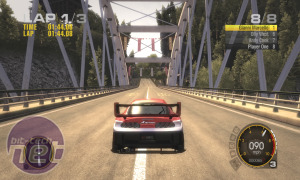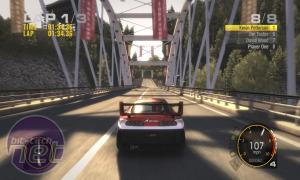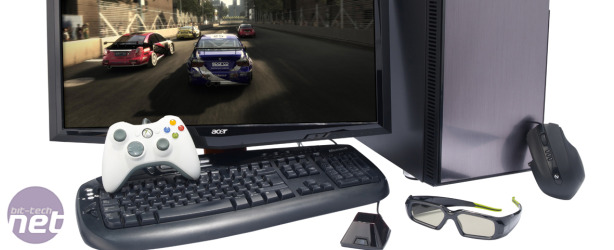3D Gaming Investigated
At the moment, there’s only one place to go for 3D gaming and that’s Nvidia. While we’ve had to use 3D Vision technology for this investigation, this article isn’t a test or review of 3D Vision itself. Instead, we wanted to focus more on the 3D effect and experience.This posed a problem for us, as we wanted to use a more naïve testing approach than that usually employed by bit-tech staff – we’ve all seen 3D technology before, have all griped about various elements of it, and we know the hardware requirements and software limitations. We therefore asked some of our colleagues from around the office to help out, and the following article is based around the results gained from this testing.
Like shampoo and cosmetics ads that use low sample sets (for example, ‘87 per cent of the 56 women polled agreed’ doesn’t really mean anything, scientifically speaking), this test shouldn’t be regarded as a clinical trial, but instead as an indication of general consensus. Hopefully, it will be a fun and informative way to spend a few minutes too.
The Challenge
We challenged our participants to set their fastest lap time in Race Driver: GRID in 2D mode and then in 3D. GRID is rated by Nvidia’s helpful 3D Vision helper tool as having ‘Excellent’ compatibility with 3D Vision, but this still meant that we had to turn off Shadows and Motion Blur in the options menu – you can see the effects of these changes below.

Shadows have to be turned of when playing GRID in 3D but the game looks noticeably worse without them
We allowed our 3D guinea pigs to have a practice lap in 2D mode to get a feel for the car and the track. They then raced in 2D to record a fast lap before switching to 3D (by pressing Ctrl-T, for some unknown reason) and trying to perform a fast lap in 3D. We let our tester use either the keyboard or a gamepad.
Our usual graphics test rig, comprising a Zotac GeForce GTX 470 Amp! Edition graphics card, was used for testing, along with a 23.5in Acer GD235HZ 3D screen. After the race was completed, we asked the tester to complete a survey comprising ten questions, which covered topics such as the quality of their eyesight (with any corrective lenses in place), how they rated the 3D effect, whether the glasses were comfortable, how much they would pay for the 3D technology and their attitude towards cheesecake. We compiled this data on a spreadsheet, and then scrutinised and evaluated the results to identify correlations and trends.

MSI MPG Velox 100R Chassis Review
October 14 2021 | 15:04











Want to comment? Please log in.